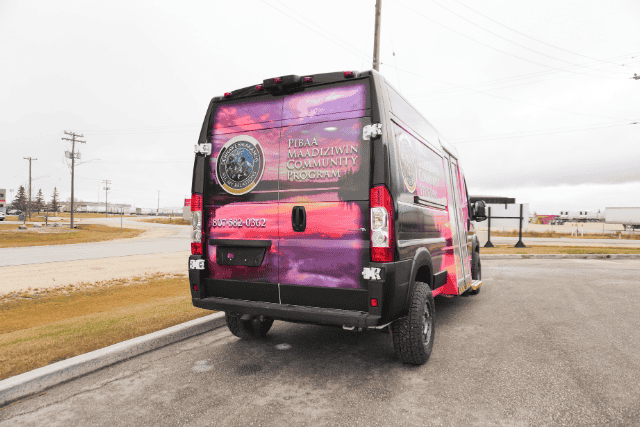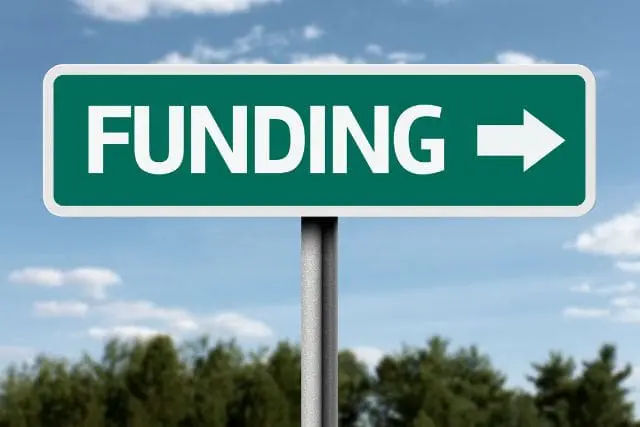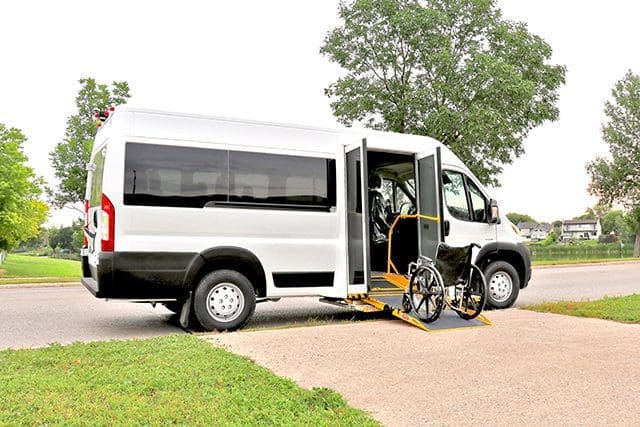Saviez-vous que Indigenous people make up about 5% of Canada’s population, yet many still struggle with basic healthcare and transportation? You’ve likely seen this first-hand if you’re part of a First Nation, Inuit, or Métis community. Maybe elders miss appointments because there’s no patient transfer van. Maybe people who use wheelchairs can’t get to community events because there’s no wheelchair accessible cab in the community. Or maybe the nearest clinic is hours away. These gaps create stress, limit independence, and put lives at risk.
That’s where Indigenous Services Canada comes in. The Department of Indigenous Services Canada offers funding and support for mobile startups that bring care closer to home. Imagine being able to run your own mobile clinic, offer safe patient transfer services, or provide accessible rides for community members. Closing these gaps leads to healthier people, stronger connections, and more dignity for everyone.
Au MoveMobility, we’ve built vehicles for over 20 ans that do exactly this. We’re certified by Ford QVM and Stellantis QPro, and our vans carry Canada’s Marque nationale de sécurité. We’ve helped health teams and Indigenous organizations across the country launch their first mobile units, and we always build around your community’s needs.
Dans cet article, vous apprendrez
- If Indigenous Services Canada can help with your mobile startup
- Five steps involved in gaining ISC support
Can Indigenous Services Canada support your mobile startup?
This section shows how the Department of Services aux indigènes Canada helps you launch mobile healthcare and accessible transportation services. If you’re planning to start a clinique médicale mobile, patient transfer van, or wheelchair accessible cab, this support could be a key piece of your funding puzzle.
Let’s look at how their Non-Insured Health Benefits (NIHB) program helps make mobile services possible.
Medical transportation funding through NIHB
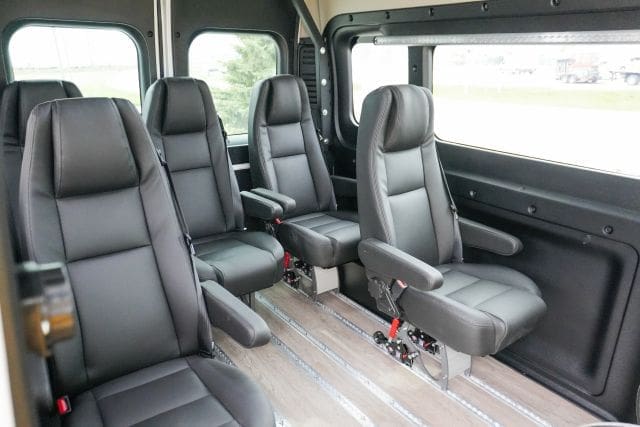
Le NIHB program covers travel for medical appointments when care isn’t available in the person’s home community. That includes both getting to and, in some cases, bringing care closer.
Here’s how NIHB helps mobile health and transport services:
- What it covers: NIHB pays for medical travel by plane, taxi, wheelchair van, or private vehicle. It may also cover meals and lodging if the trip is long or overnight. Read more here
- Who it’s for: NIHB is available to eligible First Nations and Inuit clients who need medically necessary care not available in their home community.
- Pourquoi c'est important : If your community runs a mobile medical unit or offers patient transfer services, NIHB could help fund travel to and from these services.
This means mobile startups like yours can:
- Offer funded rides: Vans that help people reach care may be eligible for travel reimbursement.
- Improve access: Your mobile clinic or transport van may reduce the number of long, difficult trips to hospitals.
- Close care gaps: NIHB helps you serve people who would otherwise miss appointments or go without care.
Indigenous Community Infrastructure Fund (ICIF)
Le Indigenous Community Infrastructure Fund (ICIF) helps build and improve community services like health centers, water systems, roads, and more. These upgrades often support the launch or expansion of mobile programs, especially in rural and remote communities.
What does the ICIF fund support?
- Community-led projects: The funding supports what votre community decides is needed. That could include health facility upgrades, garages for storing mobile units, or new spaces for accessible services.
- Large-scale investment: The fund includes $4.3 billion over four years for First Nations, Inuit, and Métis Nation communities.
- Essential infrastructure: While it’s not tied to mobile vans directly, if your vehicle is part of a bigger health or access project, this could help fund the facility or support system around it.
How can this help your mobile startup?
- Supports your base: You can upgrade a building to serve as your mobile clinic’s home base.
- Improves access: Add driveways, pick-up zones, or shaded areas to safely load wheelchairs or stretchers.
- Builds for the future: These upgrades help keep your mobile medical unit or wheelchair accessible vehicle running smoothly long-term.
Indigenous Health Equity Fund for targeted projects
Le Indigenous Health Equity Fund (IHEF) is one of the largest investments ever made to improve Indigenous-led healthcare in Canada. Starting in 2024, the federal government is investing $2 billion over 10 years, which is $200 million every year, to support physical and mental health solutions designed and driven by Indigenous communities.
What does this fund support?
- Indigenous-led projects: Funding is reserved for First Nations, Inuit, and Métis communities to decide their own health priorities.
- Health equity goals: Projects must focus on closing health gaps and making care more accessible and culturally safe.
- Innovation in care: From new models of primary care to services that bring health closer to home, the fund is meant to back creative, community-driven approaches.
How can this help your mobile startup?
- Fits mobile care models: If your mobile clinic or accessible transport program is part of your community’s plan to improve access, it could potentially qualify for support.
- Encourages innovation: Because the fund is designed to test and expand new ideas, mobile health projects have a natural place here.
- Keeps control local: Decisions stay in the hands of Indigenous communities, ensuring your mobile program reflects your culture, needs, and vision.
The IHEF doesn’t guarantee direct funding for vehicles, but if your mobile service is tied to a larger health access project, it can be a strong fit.
How do you apply for Indigenous Services Canada funding?
Applying for funding from Indigenous Services Canada might feel overwhelming at first—but once you know the process, it gets a lot more doable. Here’s a simple breakdown of how your community or organization can get started.
Step 1: Identify the right funding stream
Before you apply, figure out which ISC program fits your mobile startup best.
Start by asking:
- Are you looking for travel cost support? Look into the NIHB medical transportation benefits.
- Are you leading a short-term health access project? Explore the Health Equity Fund – Targeted Initiatives.
- Is this part of infrastructure planning? Learn about ISC’s Indigenous Community Infrastructure Fund.
Step 2: Contact your regional ISC office
Each region in Canada has its own ISC contacts. This is where you can ask questions, explain your idea, and get help with next steps.
Why this helps:
- Clarifies eligibility: They’ll let you know if your mobile health or transport idea fits a specific program.
- Builds relationships: ISC often works closely with communities. Early contact can help your project stay on their radar.
- Gain de temps : You’ll avoid applying for something that isn’t a fit.
You can find the contact info for your region on this ISC page.
Step 3: Prepare your proposal
Each funding stream has its own application form or process, but in general, you’ll need to include:
- Project overview: What your mobile service is, why your community needs it, and how it will work.
- Community involvement: Show that your community supports the idea and will be involved in making it happen.
- Budget details: Include vehicle costs, staffing, insurance, maintenance, fuel, and other real-world expenses.
- Outcomes and goals: What impact will your mobile clinic or transport service have?
Step 4: Submit through the correct channel
Some ISC programs accept applications through online portals, others by email or in partnership with Indigenous representative bodies (such as Tribal Councils or Provincial/Territorial Indigenous Organizations). Your ISC contact will guide you.
Quick tips for success:
- Keep it simple and clear: Use plain language. No need for fancy reports.
- Tell your story: Real examples from your community help show the impact this project will have.
- Use ISC’s words: Match your proposal with the language used in their funding goals, especially around health access, community safety, and cultural relevance.
Step 5: Plan for the long term
Getting funding to launch a mobile clinic or wheelchair van is a big first step. But keeping it running for years to come is just as important. Many programs start strong but struggle later when short-term funding runs out.
Here are a few ways to plan for long-term success:
- Track your impact: Count how many people you serve, how far you travel, and how care improves.
- Ask for feedback: Talk with community members to learn what’s working and what needs to change.
- Blend funding sources: Use NIHB for trips, IHEF for health projects, and ICIF for buildings or upgrades.
- Plan for costs: Don’t forget insurance, fuel, repairs, and staff training in your budget.
- Show results: Share stories and data so funders see the value in keeping your service going.
When you build sustainability into your plan from day one, your mobile program can continue to grow, adapt, and support your community well into the future.
Find funding to bring mobile care to your community
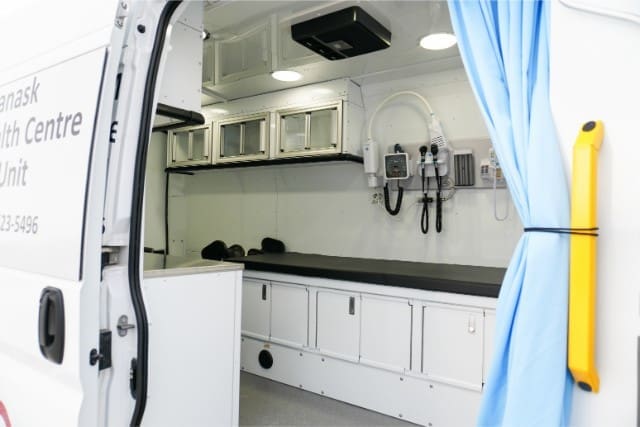
You’re here because your community needs better ways to get care. Maybe you need a mobile clinic or a wheelchair van, but right now, those things feel out of reach.
Voici ce que vous avez appris :
- Indigenous Services Canada offers help for medical travel and health projects.
- You now know where to start and how to apply for the right funding.
At MoveMobility, we’ve spent almost 20 years building vans that help people get the care they need. We build each vehicle with safety, comfort, and your community’s needs in mind. Our team helps from the first call to the final delivery, and we’re still here after that. We care about the same things you do. If you have questions, click the button below to talk to a mobility expert.
Not ready to chat just yet? No problem. Check out these helpful articles to learn more:
- Delivering wheelchair vans to remote locations in Canada: How it works when your community is far from a big city.
- Quel est le coût d'une camionnette médicale mobile en 2025 ?? What costs to expect when planning your budget.
These articles can help you take the next step when you’re ready.


